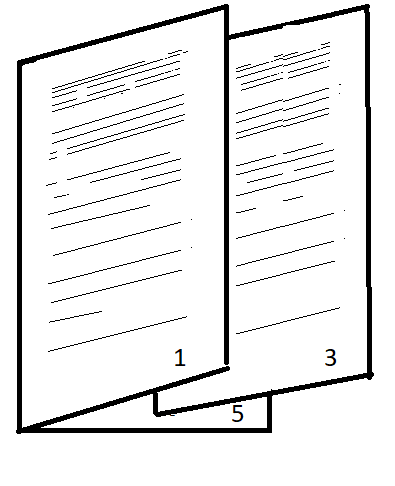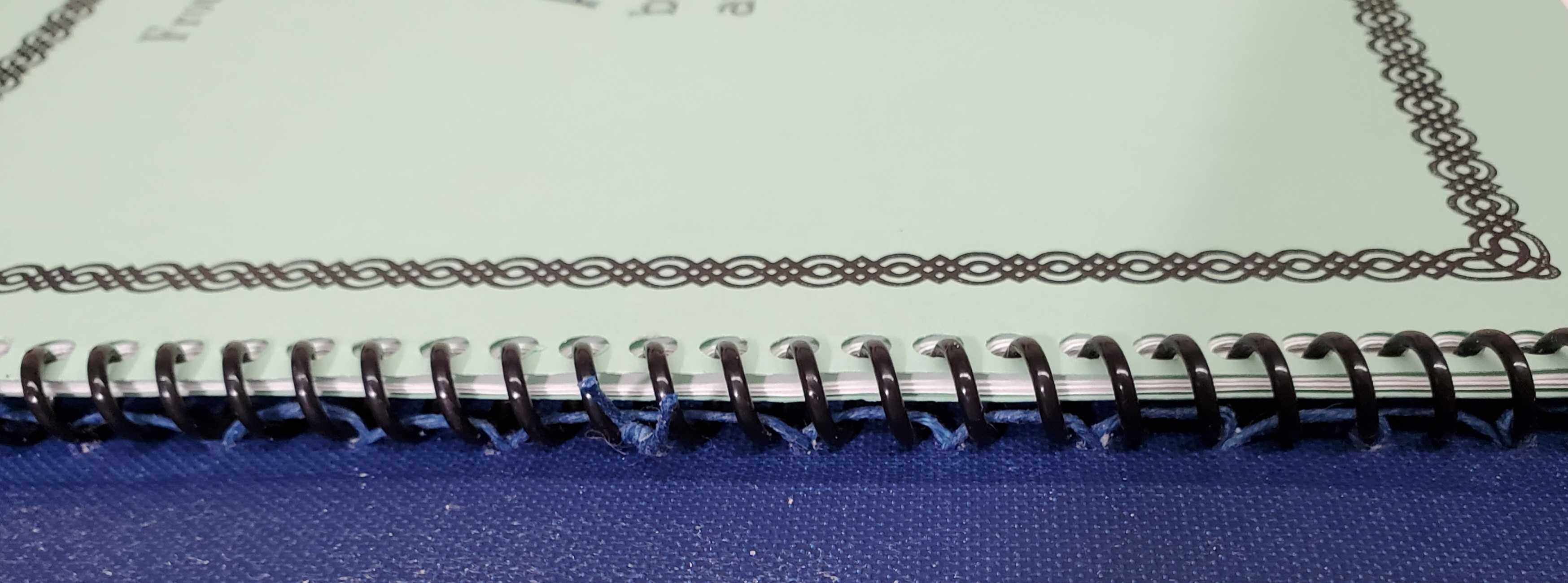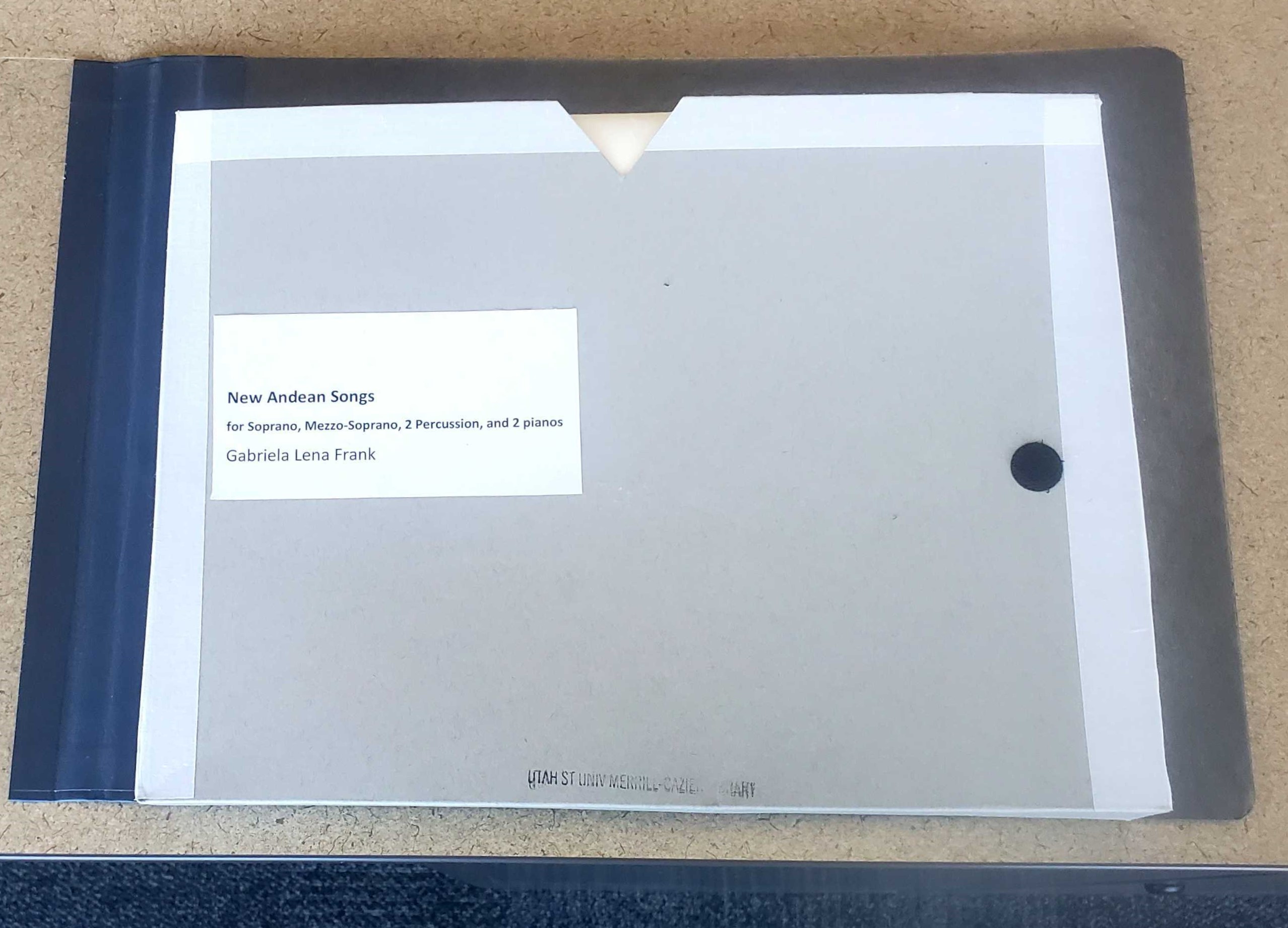Draft: 8/19/2021
...
Parts: if there is more than one instrument or voice:
Are thereseparate parts tucked into the center or back of the score?
Scores with parts will be kept together, will share a barcode, and will be checked out together in Sierra.
While checking for parts, make sure our tattle-tape hasn't been put into the score so as to glue one or more parts to the score. They need to be removeable. If so, carefully unstick glued parts from the score and cover the tattle-tape with opaque repair tape.
Also, watch for scores with an odd number of leaves, which can contain a continuously paged loose sheet in the center of the folio: if loose, attach to the crease of the center fold with clear binding tape.
...
While learning the technique, it is easiest to turn after each set of stitches (shown in figure 4: no.1-5). Pull the thread tight while making the stitches, being careful to pull along the spine, instead of right angles.
...
6. Make sure all sewn stitches are tight, then, you can either tie the first & last threads together (figure 3, diagram), OR tie a knot to the center stitch (figure 4, step 5); then trim excess thread off, leaving about 3/4 to 1 inch thread.
...
Spiral bound and Comb-bound scores open flat for easy music performance, but have numerous problems in a library:
They typically don’t stand upright on the shelf.
They’re wider than the text block of their score which exposes them to damage & meshing.
Spiral/Comb bindings can also make it difficult to package together scores with more than one part.Spirals and combs are wider than the pages causing meshing & damage.
They usually won’t stand upright on the shelf:
Unfortunately, these bindings are becoming more common in music.
We have
used a few methods over time:Laminatingtried various methods of dealing with these:
Ignore the problem (in the past)
Laminate the front and back covers to make spiral/comb-bound score sit better on the shelves.
Making Make squared pockets in a binder to hold the entire spiral/comb-bound score (and & parts, if any).
Tacketing the spiral and gluing the back of spiral-bound scores into a pambinder.
Sewing spiral-bound scores to the spine of a pambinder.
...
For Art music with more than one part, we have sometimes made either one large square pocket or two square pockets to hold the score plus parts, and glued the pocket(s) into a handmade pamphlet binder. This allows for easy storage on the shelf while providing protection in stacks for the fragile spinesstacks for the fragile spines. We have subsequently have some scores (& parts) returned without their pambinder.
Tacketing and gluing into a pambinder
In some cases, we could We have just started to attach a single spiral/comb score itself into a pamphlet binder by gluing the score’s back to the binder, and sewing (tacketing/lacing) the spiral/comb to the binder spine; leaving enough space around the spiral/comb to allow it to open flat & move freely. I’m still investigating this option; might be useful for high use single spiral bound scores.
See also Peter Shirts' excellent presentation: “The bane of a music librarian’s existence”: why and how music libraries rebind spiral- and combbound scores archived here: http://semla.musiclibraryassoc.org/semla2019/presentations/Shirts_SEMLA_2019_Spiral_Bound_Scores.pdf
Sewing
...
into a Pambinder
I punched double holes for each station and ran the string thru the spiral; most seem to the few explanations I’ve found on the web prefer tacking down just a few spirals since the glued down back cover does a great deal of the work of holding the score in the binder.
Unfortunately, some spiral bound scores come with multiple parts, requiring some kind of pocket (or 2 pockets) glued to the pamphlet. A solution may be to add more sewing stations to the spiral lacing/sewing structure and leaving leave the back cover unglued. So that a pocket can be attached to the pamphlet back , for the partspocket:
A very strong multiple figure-8 sewed binding, which still allows the spiral bound music to open flat, leaving the back sheet music cover unglued, and allows a pocket to be attached to the pamphlet back for parts.
...
Spread glue over the entire back to the pamphlet binder, and press the pocket into place on the pamphlet back. Wrap the parts with wax paper and insert them into the pocket, then press everything in the pamphlet binder overnight with heavy book or brick on top.
Simple Slipcase/Pocket:
Requires archival, permanent, double-sided tape.
...
For bulky paperback scores or spiral/comb scores plus parts. The flaps are taped together (in the order of folding) with archival permanent double-sided tape. Cut a notch in the front to allow for easier removal. These measurements fit our most common size of score and pamphlet binders (the thickness will vary).
Warning: I discovered this is slipcover can be easy to pull apart:
However, since the folded edge is the strongest, it can still be used, if turned so the strongest folded side is down; then glued into a wide binder (Based on the slipcase below from CCI.)
Stronger Slipcase/Pocket
The last two flaps are glued to the back with binder glue.
...
Other Enclosures and Boxes
A simple slipcase to stand alone, from Canadian Conservation Institute:
...
We possibly could make this one from a strong cardboard.
...








